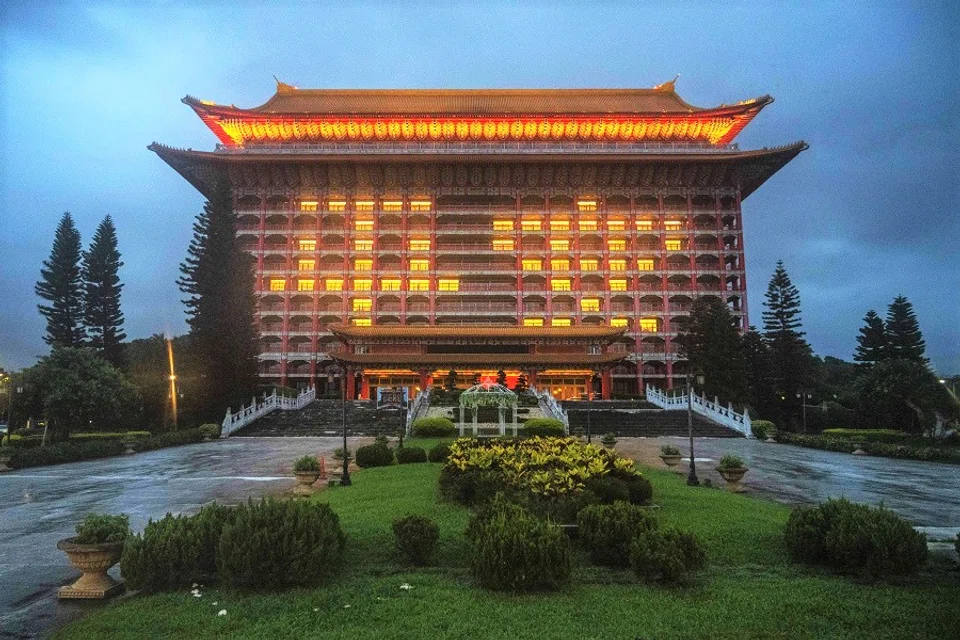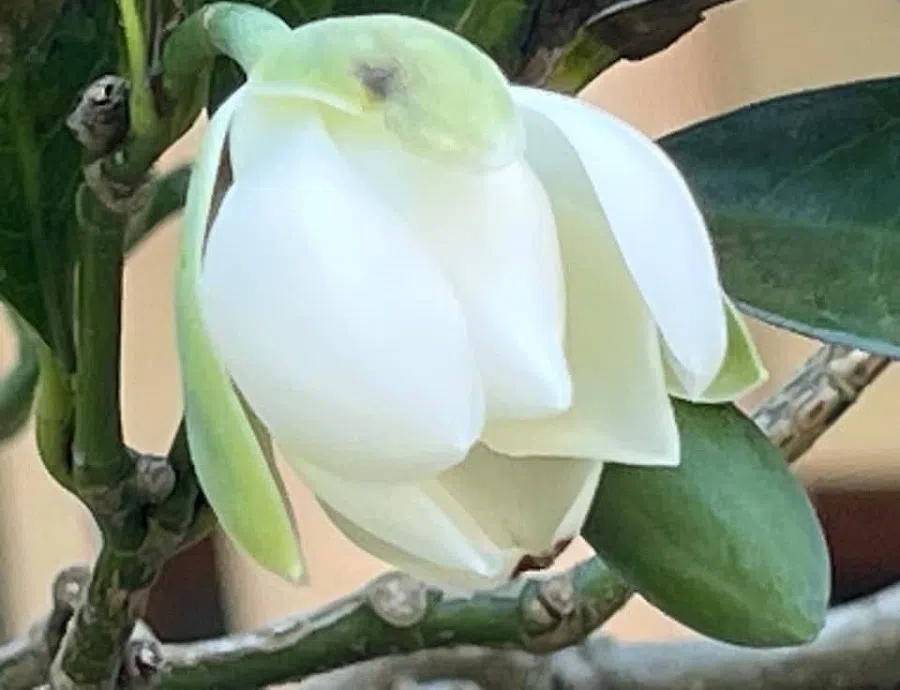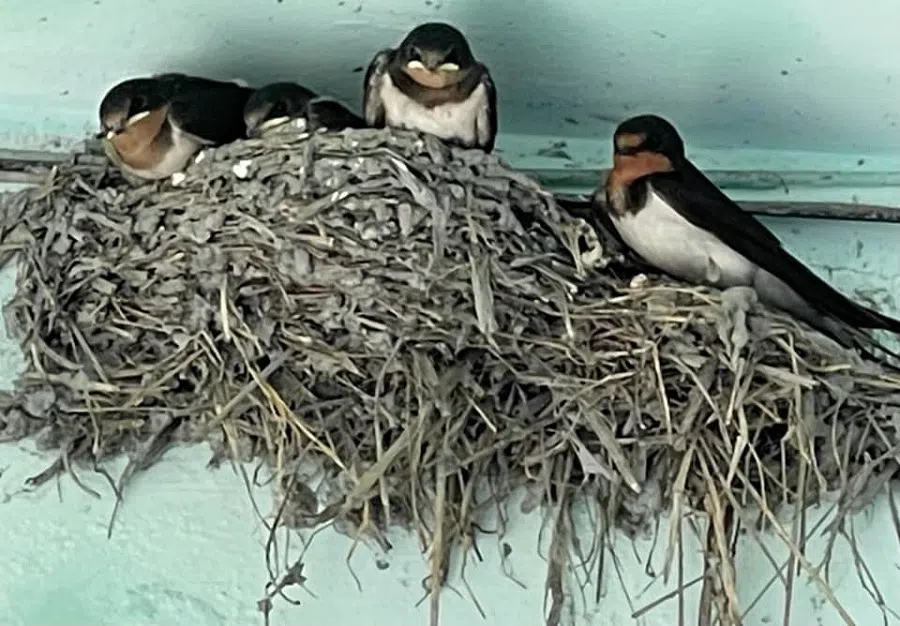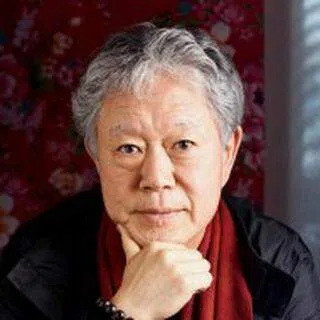Taiwanese art historian: What flowers and swallows taught me about life amid the pandemic
As art historian Chiang Hsun recites the Diamond Sutra and prays for the world amid the coronavirus pandemic, he believes in the adage that "this too shall pass". In tough times, we must remind ourselves to be grateful for the breath of life and to be kind to one another. May humankind be safe and well in their warm homes, wherever they may be.

The scent of flowers is everywhere in the Qingjue Temple in Jhihben, Taitung. In autumn and winter, the sweet perfume from more than 30 sweet osmanthus shrubs pervades this holy ground. Now, in late spring and early summer, the Magnolia figo, Yulan magnolia, gardenia, and jasmine flowers are in full bloom.
The temple monks often pick fresh flowers from the garden as offerings to Buddha. But because the Yulan magnolia trees are growing so well lately and more than a hundred flowers bloom at once, the flowers on the high branches are left to blossom and wither as they will, attracting a lot of bees and butterflies.
One early morning when I came to pray to Buddha, I noticed a Magnolia coco tree in the corner of the main hall front yard. More than a dozen of its flowers shone down on me, each round and white like the moon. They took my breath away.
Magnolia coco flowers are whiter and larger than Magnolia figo flowers. Before they bloom, they look like small ping pong balls and are as full and bright as the moon during the Mid-Autumn Festival. When they bloom, they have droopy petals - six bright white petals, in fact, cradled by three pale green sepals. They look shy and reserved, like someone holding back from speaking their mind.

The Magnolia coco is not a flamboyant flower. Because it hides among lush green leaves and hunches over, it is difficult to spot. Passersby can only find it by following its mild fragrance; with a whiff, one turns his head, searching for the source of the scent, knowing it must be near. I often visit the Qingjue Temple, but this is the first time I encountered Magnolia coco flowers in full bloom and was able to bear witness to how well it camouflages itself. The Magnolia coco flower only blooms for a short time. Fallen petals under the tree are all that remain as soon as morning is over.
I have just recited the Diamond Sutra in the Buddha hall as a prayer for all sentient beings (众生). I looked at the fallen petals scattered on the ground and understood that life is impermanent. The Diamond Sutra says that "'atoms of dust' are not essentially 'atoms of dust,' they are merely termed 'atoms of dust'" and that "'myriad worlds' are not really 'myriad worlds,' they are merely designated 'myriad worlds'".* I reminded myself to "neither become perturbed by its extreme modes of thought, nor alarmed by its lofty sentiments, nor apprehensive about realising its high ideals" and silently chanted it in my heart.
The spread of the Covid-19 coronavirus is like the wrath of Bodhisattva being unleashed across the universe and bringing fear and anxiety to all sentient beings. I was reminded that the scriptures also said that "the whole realm of sentient life is ephemeral and illusory".
The Magnolia coco flower may have fallen to the ground, but mercy is like the flower's lingering scent; it covers the universe. A prayer intention and a flower's sweet fragrance may tide you through the worries of life, bringing you peace amid tumultuous times.
. . . . . .
From high above, a loofah flower blooms. It is a bright incandescent yellow. Set against the daylight, I see the flower to its nutrient-carrying veins.
The loofah plant is a climbing vine; it stretches out its delicate but strong vines in all directions, exploring its way around.
While extremely common and insignificant, the loofah plant has a strong will to survive and a firm desire to grow and reproduce. Under the vast sky and woolly clouds of the countryside, it seems to be reminding me not to fall into tedious and trifling entanglements. At this moment, I just want to bow my head and pray for the afflicted, the infected, and the quarantined. I pray that the island will tide through this suffering soon.
The loofah flower yearns for the sun, water and fresh air; it wants to grow and reproduce. Aren't these our desires too?

We can only understand what "all sentient beings" truly means when we start respecting the smallest life form.
I prayed for "all sentient beings" in the morning and came across this verse in the Diamond Sutra: "Because, in reality there are no living beings to whom the Lord Buddha can bring salvation." I pondered over this verse for a long time. Why was Buddha so certain of this?
If the flower before me is a "sentient being" and if people who have fallen sick in the pandemic - strangers I do care about - are also "sentient beings", would Tathagata still say that "there are no living beings to whom the Lord Buddha can bring salvation"?
I do not have the answers to the many questions that I have. It would be meaningless to draw hasty and impulsive conclusions too. Perhaps this flower can be with me through my moment's quandary.
I clasp my hands and give thanks.
. . . . . .
A swallow household has built a nest on the ground floor of my art studio. Just a few days ago, the parents of the pair of young swallows found food for the family. Not wanting to frighten them, I hid in a corner watching them feed their young.
The baby swallows quickly grew as the days went by. The parents were on the alert whenever people looked up and came too close. Clasping stalks of straw longer than their bodies between their beaks, the swallow parents slowly mixed them with mud to build a shelter from wind and rain and a place to nurture their next generation. We call this a "nest", but to the birds, it is actually a "home". It's probably the case that the desire to have a home precedes building complicated and technically challenging architectural wonders.

The nest that these four swallows rely on speaks of the profound meaning of survival. It is perhaps not just about an aesthetic design? "The birds are happy to have found a home. I, too, love my house..." From the birds that see their nest as a refuge, Eastern Jin dynasty Chinese poet Tao Yuanming learned how to cherish his own home and respect the homes of every living being. The swallow family is safe and sound.
As the Covid-19 pandemic sweeps across the earth, international media posted a photograph of an Indian boy living in isolation on a tree as he had been infected with the Covid-19 coronavirus and did not want to spread it to his family. A heartbreaking image indeed.
It is increasingly clear that the world is a single entity - no place remains unscathed. No matter the distance, as long as the coronavirus is spreading in an area, it is just a matter of time before other areas lose their peace. Living in the turbulent and chaotic Eastern Jin dynasty where people were fearful and anxious, Tao constructed a utopia - the Peach Blossom Spring (桃花源) - to satisfy the most basic desire for stability.
"The birds are happy to have found a home." Right at this moment, amid the pandemic, I pray that all beings will have a home and peace of mind.
*All quotes from the Diamond Sutra are translated by William Gemmell from Chinese to English at vincentpoon.com.

![[Big read] Paying for pleasure: Chinese women indulge in handsome male hosts](https://cassette.sphdigital.com.sg/image/thinkchina/c2cf352c4d2ed7e9531e3525a2bd965a52dc4e85ccc026bc16515baab02389ab)


![[Big read] How UOB’s Wee Ee Cheong masters the long game](https://cassette.sphdigital.com.sg/image/thinkchina/1da0b19a41e4358790304b9f3e83f9596de84096a490ca05b36f58134ae9e8f1)
